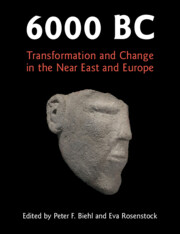46 results
24 - From Deforestation to Sustainable Development
- from Part III - Diplomacy
-
- Book:
- Five Times Faster
- Published online:
- 24 October 2024
- Print publication:
- 07 November 2024, pp 314-326
-
- Chapter
- Export citation
Are there risk factors commonly observed on Australian farms where the welfare of livestock is poor?
-
- Journal:
- Animal Welfare / Volume 33 / 2024
- Published online by Cambridge University Press:
- 16 September 2024, e34
-
- Article
-
- You have access
- Open access
- HTML
- Export citation
11 - The Little Fellow and the Great Depression
-
- Book:
- Citizen Cowboy
- Published online:
- 16 August 2024
- Print publication:
- 29 August 2024, pp 284-316
-
- Chapter
- Export citation
4 - Negotiating with Floodwaters
-
- Book:
- Hydropower in Authoritarian Brazil
- Published online:
- 09 July 2024
- Print publication:
- 27 June 2024, pp 125-163
-
- Chapter
- Export citation
Understanding the potential of sustainability turn in farming: review of sociotechnical adoption factors of agri-environmental cropping practices
-
- Journal:
- Renewable Agriculture and Food Systems / Volume 39 / 2024
- Published online by Cambridge University Press:
- 09 May 2024, e16
-
- Article
-
- You have access
- Open access
- HTML
- Export citation
Participatory approaches for water monitoring and harvesting: Case study from India
-
- Journal:
- Cambridge Prisms: Water / Volume 2 / 2024
- Published online by Cambridge University Press:
- 20 December 2023, e2
-
- Article
-
- You have access
- Open access
- HTML
- Export citation
The Politics of Time: The Political Origins of Working-Time Regulation
-
- Journal:
- Social Science History / Volume 48 / Issue 1 / Spring 2024
- Published online by Cambridge University Press:
- 31 August 2023, pp. 65-91
- Print publication:
- Spring 2024
-
- Article
-
- You have access
- HTML
- Export citation
24 - From Deforestation to Sustainable Development
- from Part III - Diplomacy
-
- Book:
- Five Times Faster
- Published online:
- 19 March 2023
- Print publication:
- 06 April 2023, pp 261-271
-
- Chapter
- Export citation
4 - The Prehistoric Peoples of Europe
-
- Book:
- Parasites in Past Civilizations and Their Impact upon Health
- Published online:
- 30 March 2023
- Print publication:
- 06 April 2023, pp 42-52
-
- Chapter
- Export citation
An Early Neolithic enclosure at the site of Vlaho, Pelagonia
-
- Article
-
- You have access
- Open access
- HTML
- Export citation
13 - Organising for Change
-
-
- Book:
- Transforming Food Systems Under Climate Change through Innovation
- Published online:
- 19 January 2023
- Print publication:
- 19 January 2023, pp 144-155
-
- Chapter
-
- You have access
- Open access
- HTML
- Export citation
Attitudes of farmers towards Limousin cattle and their handling
-
- Journal:
- Animal Welfare / Volume 16 / Issue 2 / May 2007
- Published online by Cambridge University Press:
- 11 January 2023, pp. 147-151
-
- Article
- Export citation
Defining and measuring farmers’ attitudes to farm animal welfare
-
- Journal:
- Animal Welfare / Volume 23 / Issue 1 / February 2014
- Published online by Cambridge University Press:
- 01 January 2023, pp. 47-56
-
- Article
-
- You have access
- Open access
- Export citation
The willingness of conventional farmers to participate in animal welfare programmes: an empirical study in Germany
-
- Journal:
- Animal Welfare / Volume 26 / Issue 1 / February 2017
- Published online by Cambridge University Press:
- 01 January 2023, pp. 67-81
-
- Article
- Export citation
Economic effects of participation in animal welfare programmes: does it pay off for farmers?
-
- Journal:
- Animal Welfare / Volume 27 / Issue 2 / May 2018
- Published online by Cambridge University Press:
- 01 January 2023, pp. 167-179
-
- Article
- Export citation
19 - A Cup of Cocoa and Chocolate Drops (1946)
-
- Book:
- W. E. B. Du Bois: International Thought
- Published online:
- 10 November 2022
- Print publication:
- 17 November 2022, pp 215-228
-
- Chapter
- Export citation
23 - Irrigation Planning
- from Part VI - Design
-
- Book:
- Irrigation Engineering
- Published online:
- 05 August 2022
- Print publication:
- 07 July 2022, pp 445-455
-
- Chapter
- Export citation
1 - Fin de Siècle (1856–1900)
-
- Book:
- A History of Modern Palestine
- Published online:
- 28 April 2022
- Print publication:
- 12 May 2022, pp 13-40
-
- Chapter
- Export citation

6000 BC
- Transformation and Change in the Near East and Europe
-
- Published online:
- 30 April 2022
- Print publication:
- 05 May 2022
3 - “Herdsmen Are Terrorists”
- from Part I - Conflict Discourse in Newspaper Reporting
-
-
- Book:
- Discourse, Media, and Conflict
- Published online:
- 21 April 2022
- Print publication:
- 28 April 2022, pp 69-92
-
- Chapter
- Export citation

